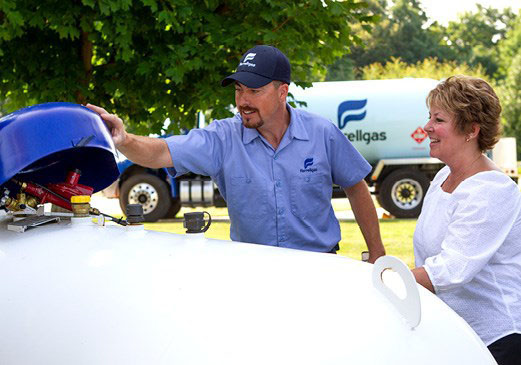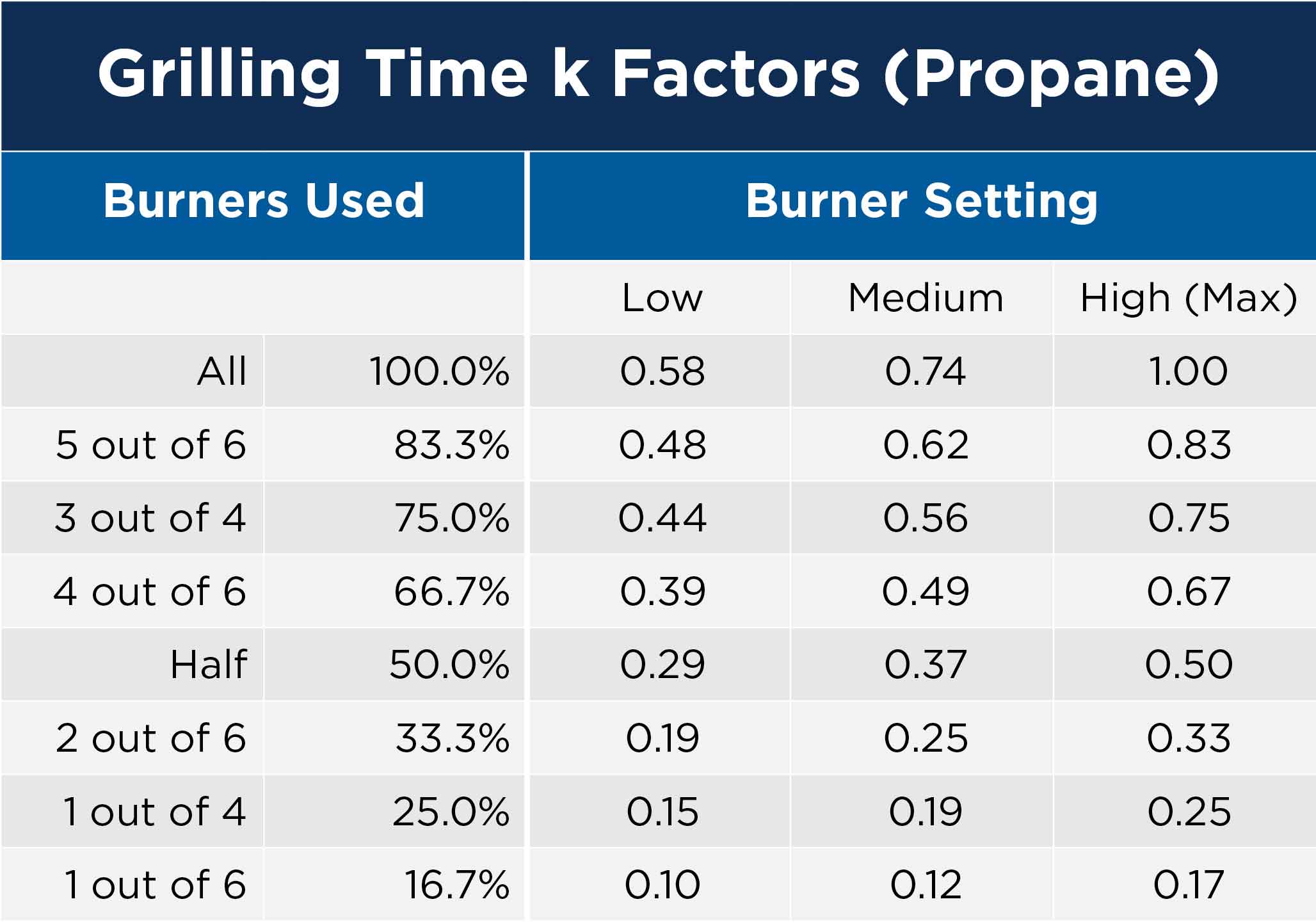How to check your propane tank level
We’ve all been there before - everyone gathered out on the deck or patio enjoying the weather and fun conversation. The food is ready for the grill, and suddenly you realize you’re out of propane, or don’t have enough left in the tank to feed your guests.
While such a last-minute revelation is easily solved with a quick trip to your local Ferrellgas location or a Blue Rhino exchange station, there are a number of handy tricks you can use to determine ahead of time whether you have enough propane for your event. Below, we’ll outline four methods that will help you check your propane tank level.
How to check the level of a propane tank
1. The warm water, cool hand method
This is the quickest and easiest way to get a feel for the propane level in your tank. Simply pour warm water over your tank, and then run your hand along the side of the tank.
As you reach the level of propane in your tank, the temperature will turn cool to the touch. This method relies on a physical reaction between the hot water on the tank surface and the propane inside your tank - creating a temperature difference you can feel. As the hot water heats the tank’s exterior, the propane reacts, creating a cool spot at the fill level. This method won’t give you a precise reading, but it will allow you to estimate how close you are to needing a tank exchange.
2. Using a gauge
This simple solution gives users an instant-read on measuring the level of their portable liquid propane gas tanks. Most portable LPG cylinders equipped with gauges express the volume of propane in terms of percentage of full - showing 100 percent when the tank is full with 20 pounds of propane, then dropping during use.
Such gauges work from pressure inside the tank, and make a determination of remaining levels. This style of pressure reading gauge can be found in home repair and retail outlets throughout the country. They are inexpensive, easy to install, and easy to read. Once yours is in place, you’ll simply remove it when the tank is depleted and install it on your next one.
3. For More Precision: Tipping the Scale Method
This method offers a more precise measurement, but it requires some effort to disconnect your propane tank from the grill. You’ll also need a household scale and the patience to perform a few simple calculations.
Propane tanks generally are stamped with an empty or “tare” weight - usually between 17 and 19 pounds. A standard sized propane tank when filled holds 20 pounds of propane. Place the tank on your scale to get the total weight, and then subtract “tare” weight to determine how many pounds of propane is left in your tank.
Pounds of propane remaining = [tank weight in lbs] - [“tare” weight: 17-19 lbs]
The formula can be carried out further to determine the number of gallons, and beyond, to estimate the amount of cooking time left in your tank. Take your net weight divided by 4.2 to convert the reading to gallons.
Gallons of propane = tank weight in lbs. / 4.2
A gallon of propane contains approximately 92,000 BTUs, and a reading of your grills BTU per hour rating can offer a rough estimate of cooking time left in your tank.

4. The Mathematician Method: How Much Cooking Time Do You Have Left
Get out your calculator, because this complex method of determining how much propane is in your tank requires several steps through the world of mathematical formulas. Yet it is one of the most accurate approaches to estimating your propane levels - and can be used in a predictive manner as you deplete your tank.
Remember these figures: A full tank contains 20 pounds of propane, the weight of propane divided by 4.2 converts the units into gallons, and a gallon of propane produces roughly 92,000 BTUs of energy. To complete the formula you’ll need to know the BTU per hour rating of your grill, and you’ll need to factor in the heat setting you plan to use while grilling.
For example, to determine the minimum amount of cooking time you can expect you’ll be able to cook with a full tank, you can use the formula:
((20/4.2)x(92,000))
Cooking Time = _______________________
Max BTU per hour of grill
In this case, your propane tank has 4.76 gallons of propane capable of delivering about 438,000 BTUs. If your grill is rated for 30,000 BTU per hour on the high setting (438,000/30,000) you can expect between 14 and 15 hours of cooking time on the highest setting.
How to adjust for different cooking temperatures
To make adjustments for cooking temperature, you’ll have to include something known as the “K” factor, which assigns a numerical value to cooking temperature. For instance, only using 3 burners on a 4 burner unit, on a medium setting, is assigned a K factor of .56. Alter the previous formula to account for the K factor would appear as this:
((20/4.2)x(92,000))
Cooking Time = _______________________
(.56 x 30,000)
This means at the lower usage, you could expect around 26 hours of cooking time.
While somewhat complicated, this formula can be a fun exercise, and with some tweaking could help you predict not just how much cooking time you’ll have, but how much propane you’ve used with each outing.

How do you know if your propane tank is expired?
Most portable tanks are stamped with a manufacture or test date, along with an inspector’s mark. While this is something to be aware of, it’s generally not something you’ll have to worry about. Portable propane tanks last between 10-12 years, and the professionals at Ferrellgas and Blue Rhino ensure that newer tanks are worked into circulation on a regular basis.

Easily exchange your empty propane tank at a Ferrellgas location near you
Equipped with these formulas and tools, you shouldn’t ever find yourself without propane when you need it most. But, if you ever do, remember that you’re never far away from the fuel you need for your backyard gatherings. Using this easy location finder, you’ll be back to the barbecue in no time.
CATEGORIES
Archives
- Summer 2025
- Spring 2025
- Winter 2024
- Fall 2024
- Summer 2024
- Spring 2024
- Winter 2023
- Fall 2023
- Summer 2023
- Spring 2023
- Winter 2022
- Fall 2022
- Summer 2022
- Spring 2022
- Winter 2021
- Fall 2021
- Summer 2021
- Spring 2021
- Winter 2020
- Fall 2020
- Summer 2020
- Spring 2020
- Winter 2019
- Fall 2019
- Summer 2019
- Spring 2019
- Winter 2018
- Fall 2018
- Summer 2018
- Spring 2018
- Winter 2017
